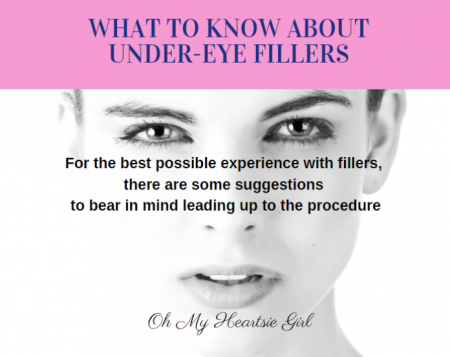The basics of under-eye fillers
What You Need To Know About Under-Eye Fillers
Baggy eyes and dark circles can distract from a person’s natural beauty. For some, no matter how much sleep, hydration, or beauty creams are used, that tired appearance just won’t go away. Walk through any beauty store and the shelves are stocked with anti-aging, dark-circle clearing, or puffiness serum promising rapid and lasting results. While they may have some visible impact, a more permanent approach can be a better option. When thinking about injections, there are some things to know about under-eye fillers.
The basics of under-eye fillers
Shadowing under the eyes is common and happens for many reasons. If the shadows under the eye look like hollow half-moons, this means they are not the result of pigment or vascular causes and can be treated with under-eye fillers. As people age, the fat compartments of the face drop and the area under the eye separates from the cheek, giving a hollow look. Young people can experience this due to genetics or the natural shape of the face. Fillers can create a smooth transition between the under-eye and upper cheek.
The contours in this delicate area of the face make it challenging to treat, but for a properly trained dermatologist or plastic surgeon, the procedure is safe. Aside from the discomforting notion of having a needle so close to the eye, a filler procedure is quick and pain-free, lasting around 30 minutes. Following the procedure there may be some puffiness and bruising around the injection site, since the area is prone to bruising.
Side effects
There can be some very rare side effects, such as infection, granulomas, movement of the filler from one area to another, and injury to blood vessels. Medical professionals should discuss the risk factors involved with fillers. It is advised not to use fillers if the skin is inflamed, there are any allergies to the ingredients of the fillers, the skin is susceptible to scarring, or if the patient has a bleeding disorder.
Ahead of your treatment
In order to have the best possible experience with fillers, there are some suggestions to bear in mind leading up to the procedure. Avoid taking over the counter blood-thinning medications such as Aspirin, Motrin, or Ibuprofen, and supplements one week prior. Two days before refrain from Tretinoin (Retin-A), Retinol, Retinoids, Glycolic Acid or any form of “anti-aging” products. Do not wax, tweeze, bleach, or use hair removal creams on the area two days before treatment.
How does it work?
Under-eye fillers are injectable treatments of hyaluronic acid, commonly known as Restylane and Juvederm. These are the injectables of choice used by medical professionals at Ottica. Hyaluronic acid is naturally found in the skin’s dermis, and when used in a filler it helps to pull water in the body for adding plumping and creates a natural look. The acid makes skin look young, soft, and supple through moisturizing.
As the body ages, it produces less hyaluronic acid, meaning the skin gets less moisture and becomes more brittle. This leads to wrinkles and other visible signs of aging. The addition of this acid creates thicker fat pads under the skin, giving skin an overall thicker appearance. Using under-eye fillers can reduce the look of dark circles and restore volume to the eye area. The professionals at Ottica have years of experience helping patients look as vibrant and alive on the outside as they feel on the inside. During a free initial consult, they will listen to patients’ concerns and desired outcomes and consul on the best treatment option.
Each syringe contains 1 mL of hyaluronic acid and most patients only need one syringe to achieve the desired result. Cost-wise, a single syringe costs between $800 and $1,000 and the results last anywhere from six to nine months.
[…]
Related Beauty Treatments:
Eyevage Reviews – The Facts About this Eye Cream
The Best Ingredients In Anti-Aging Creams